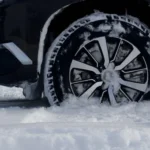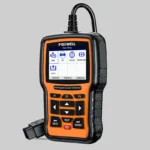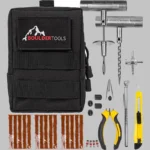As a car owner, equipping yourself with a basic set of automotive tools can save you time, money, and unnecessary stress. Whether you’re performing routine maintenance or facing an unexpected repair, these tools are essential for keeping your vehicle running smoothly and efficiently. This guide will detail the must-have tools for any car owner and provide practical tips on their use and maintenance.
Understanding the right tools for basic car maintenance is the first step in becoming self-reliant when it comes to your vehicle’s upkeep. Not only do these tools help with everyday fixes, but they also prepare you for handling roadside emergencies. With these tools, you can perform tasks ranging from changing your oil to swapping a flat tire, ensuring you’re not stranded or left waiting for costly professional help.
I. Jack and Jack Stands
A jack and jack stands are indispensable for safely lifting your car to perform tasks such as tire changes or to access the undercarriage for oil changes and other maintenance. Here’s how to use these tools safely:
- Placement: Always place the jack under the designated jacking points of your vehicle, which are typically mentioned in the car’s manual.
- Lifting: Pump the jack’s handle to lift the car off the ground. Ensure the area is flat and stable to prevent the jack from slipping.
- Securing: Once the car is elevated, position the jack stands under the safe lifting points—often along the vehicle’s frame—and slowly lower the car onto the stands.
Never work under a car that is only supported by a jack. Always use jack stands to secure the vehicle before starting your work.
II. Wrench Set
Wrenches are crucial for various tasks, such as tightening and loosening bolts and nuts in your car. Here’s what you need to know:
- Types and Uses: A good wrench set should include a combination of adjustable wrenches, torque wrenches, and ratcheting wrenches. Each type has its specific use, such as adjusting tension or reaching tight spaces.
- Material Quality: Opt for wrenches made of high-quality, corrosion-resistant materials to ensure durability and longevity.
Keep your wrenches rust-free by wiping them down with an oiled rag after each use. Store them in a dry place, preferably in an organized tool chest.
III. Screwdrivers
A versatile screwdriver set is essential for various car repairs and adjustments, including removing battery clamps, changing light covers, and more.
- Variety: Your set should include both flathead and Phillips head screwdrivers in multiple sizes.
- Ergonomics: Choose screwdrivers with comfortable, non-slip handles to ensure better grip and control during use.
Maintain the screwdrivers’ tips in good condition by avoiding misuse such as using them as pry bars, which can damage the tip and impair their functionality.
IV. Pliers
Pliers are necessary for gripping, twisting, and cutting tasks. Here’s how to select and use them effectively:
- Types: Ensure your toolkit includes various pliers such as needle-nose for reaching into narrow spaces, vice grips for locking onto bolts, and side cutters for cutting wires.
- Build Quality: Look for pliers with a sturdy construction and ergonomic handles. The jaws should align perfectly and the pivot should be smooth.
Always use the right type of plier for the job to prevent damage to both the tool and the workpiece. Store them in a tool organizer to keep them easily accessible and in good condition.
V. Tire Pressure Gauge
Maintaining the correct tire pressure is crucial for safety, fuel efficiency, and the longevity of your tires.
- Usage: To check tire pressure, remove the valve cap from the tire, press the tire gauge firmly onto the valve stem, and read the pressure level.
- Regular Checks: It’s advisable to check your tire pressure monthly and before long trips. Adjust the pressure according to the specifications in your vehicle’s manual.
Keeping your tires inflated to the proper pressure can improve your car’s gas mileage by up to 3%, according to the U.S. Department of Energy.
VI. Socket Set
A comprehensive socket set is indispensable in any car owner’s toolkit, serving a multitude of functions from engine work to assembly of various car parts.
- Selection: Choose a socket set that includes both metric and standard (SAE) sizes to cover the various specifications of nuts and bolts found in different vehicles.
- Material and Quality: High-quality chrome vanadium steel is recommended for its strength and durability. Make sure the set includes a ratchet, a T-bar, and extensions to facilitate ease of use in tight spaces.
- Organization: Keep your sockets organized in a labeled case. This not only speeds up your work but also prevents the loss of these often small and vital tools.
When using a socket, select the size that fits snugly over the nut or bolt to avoid stripping it. Use the ratchet’s reversing switch to tighten or loosen in the correct direction efficiently.
VII. Jumper Cables
Jumper cables are a must-have for any driver, crucial for addressing unexpected battery failures.
- Procedure: Attach one red clip to the positive terminal of your dead battery and the other to the positive terminal of a donor battery. Then connect one black clip to the negative terminal of the donor battery, and the other end to a grounded, unpainted metal part of your car’s engine block.
- Safety Precautions: Ensure the cars are off when connecting the cables. Start the donor vehicle first to allow the battery to charge, then try starting your vehicle.
Always keep the jumper cables in good condition without cracks or frays in the insulation to ensure safety during use.
VIII. Multimeter
A multimeter is an essential diagnostic tool for any car’s electrical system, helping you to troubleshoot issues with the battery, alternator, and other circuit components.
- Functionality: Use it to measure voltage, current, and resistance. This tool can help diagnose problems like battery drains and faulty alternators.
- Using a Multimeter: To check the battery voltage, set the multimeter to measure volts, connect the red lead to the positive battery terminal and the black lead to the negative terminal.
Familiarize yourself with your vehicle’s electrical system through the car manual to use the multimeter more effectively and safely.
IX. Flashlight or Headlamp
Working on a car often involves looking into its darker recesses, making a reliable light source essential.
- Types: A durable LED flashlight or a headlamp that allows for hands-free operation is ideal.
- Features to Consider: Look for waterproof and impact-resistant features. Adjustable focus and brightness levels can be very helpful depending on the task.
Always keep extra batteries or a charging pack in your car to ensure your flashlight is ready when you need it.
X. Emergency Kit
An emergency kit tailored to your specific needs can be a lifesaver during road mishaps or unexpected breakdowns.
- Kit Essentials: Include items like a first aid kit, reflective warning triangles, a rain poncho, and non-perishable snacks.
- Additional Suggestions: Consider adding a blanket, extra water, a window breaker, and seatbelt cutter for comprehensive preparedness.
Check and update the emergency kit regularly—replace expired items and adjust the contents based on seasonal needs and personal requirements.
Possessing a well-rounded set of basic automotive tools not only enriches your understanding of your vehicle’s functioning but also equips you to handle most roadside emergencies. By investing in these tools, you ensure that you can maintain your car’s health between professional check-ups, ultimately saving money and extending the life of your vehicle.

Matthew Dowell
Matthew, a seasoned builder from a family of craftsmen, leads Tools Trove. His passion for tools and decades of hands-on experience fuel his commitment to providing expert reviews and insightful content. Whether you’re a pro or a DIY enthusiast, Matthew’s guidance ensures informed decisions in the world of tools.




